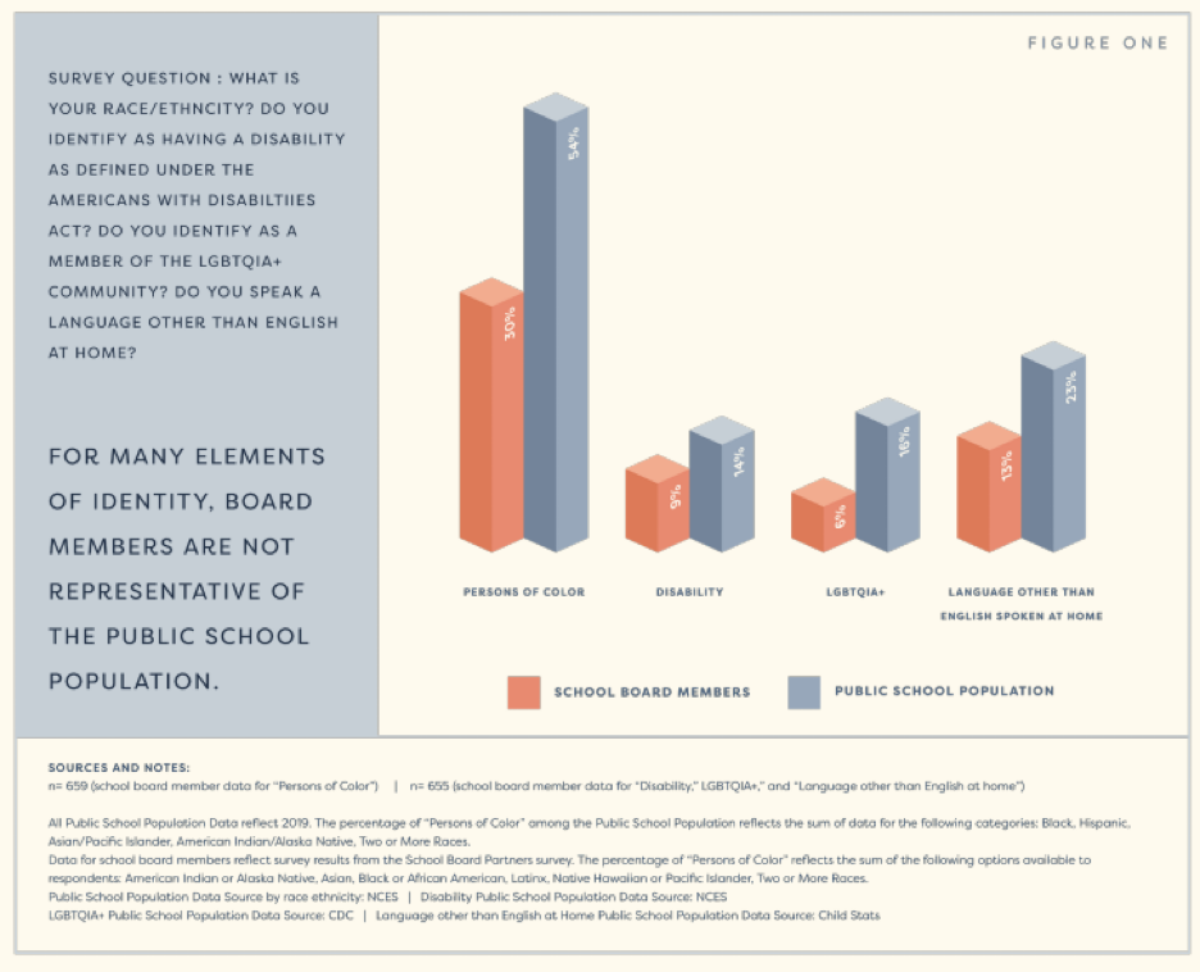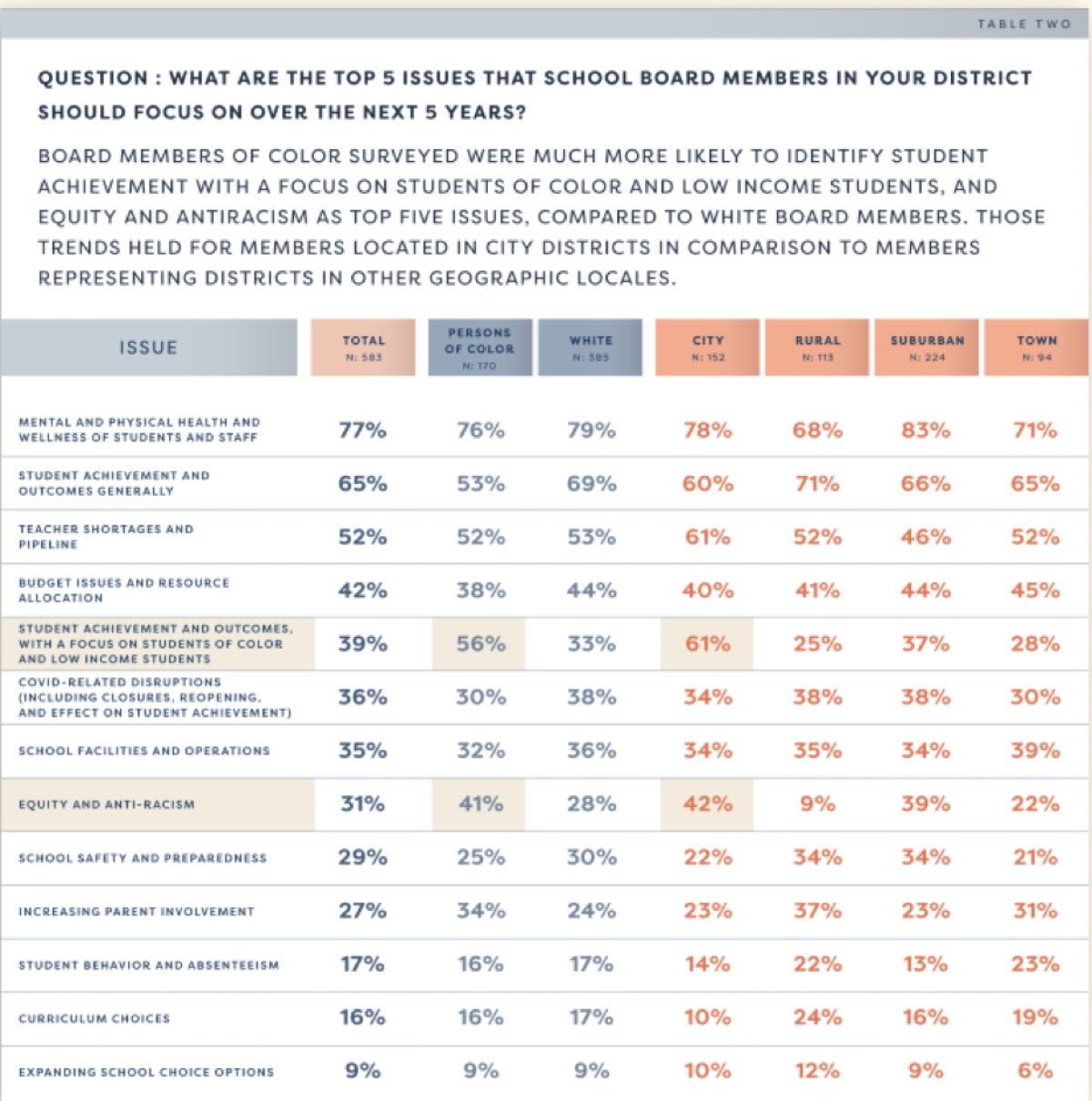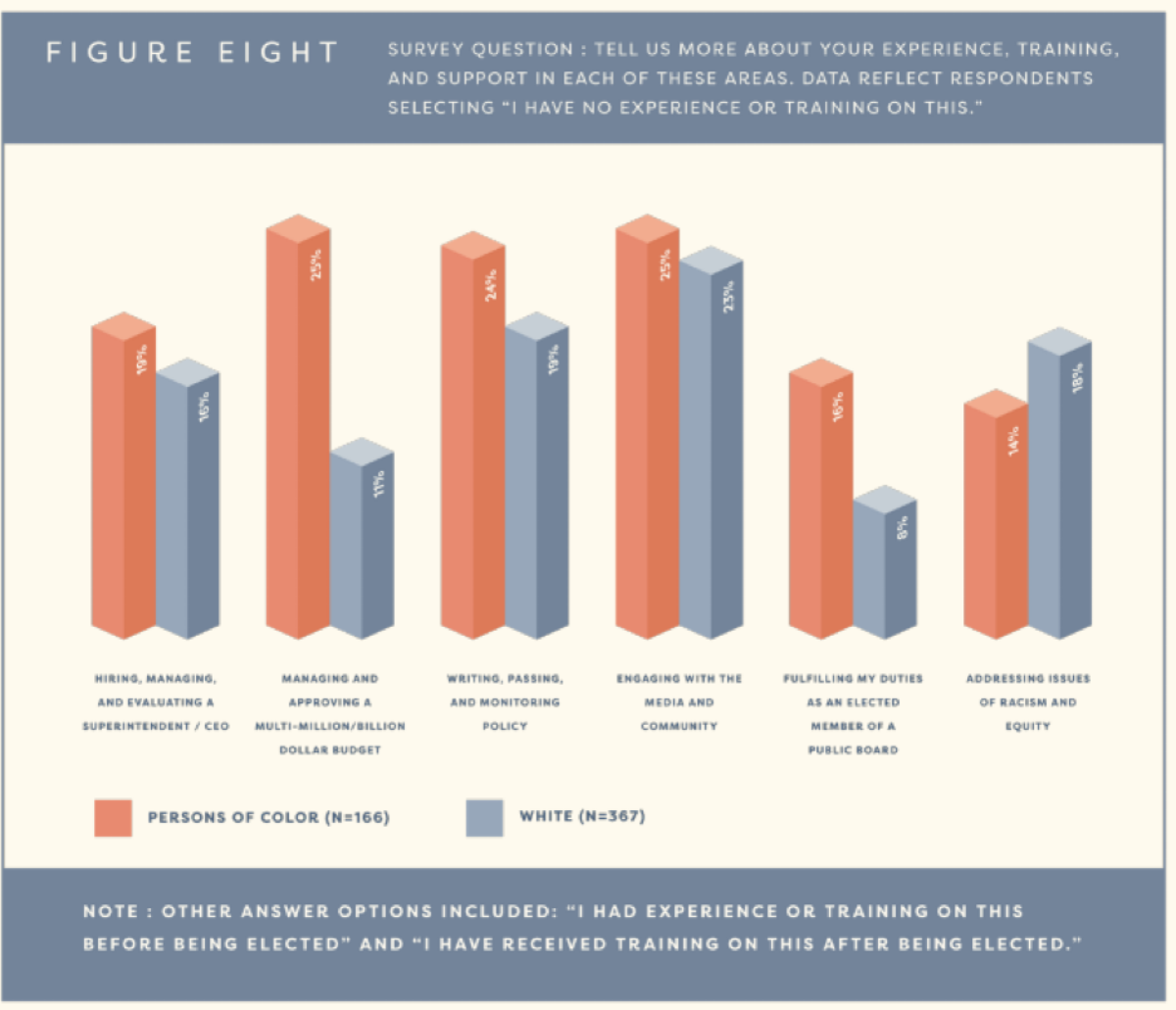The Great Resignation
As a nonprofit executive, I know that one of leadership’s major challenges is high turnover. Losing leaders and staff at a high rate can stall progress and disrupt growth. With high turnover, the team loses important institutional knowledge. Moreover, organizational priorities and initiatives can change drastically and frequently. These conditions can compromise an organization’s ability to be effective. High turnover can be particularly problematic for organizations committed to advancing social justice and structural change.
But, sometimes, turnover can be a good thing. Sometimes it can offer an opportunity.
In a new report we released last week, we found that only 38 percent of the nearly 675 current school board members we surveyed plan to run for reelection. This “Great Resignation” presents an opportunity to recruit and train new, more diverse district leaders who have shared identities and experiences with the communities they serve. Such dramatic turnover also offers the chance for school boards to evolve from institutions that often perpetuate inequity and injustice to organizations that actively seek to identify and dismantle discriminatory policies and practices. School board members of color are key to that growth.
School boards wield significant influence over outcomes, experiences, and the environment of our students in our public schools. Historically, they played a central role in creating the structural inequities plaguing our public schools. Today, they help to create school district policy and practice. Yet despite their central role historically and currently in shaping education in this country, school boards are underutilized and underdeveloped agents for advancing education equity and justice.
To support school boards becoming effective agents for change, it is necessary to better understand board members themselves. As such, we conducted a large-scale, first-of-its-kind survey of current school board members to better understand who they are, their priorities, the challenges they face, their perceptions of systemic racism in education, and the kind of support and training they need to do their job effectively.
We go into great detail in our report about the composition of current school boards, their priorities, the availability of training and development opportunities, as well as their beliefs about racism. We also offer a strategic framework for an effective antiracist school board. Here, I want to highlight three key opportunities presented by the “Great Resignation.” These are three opportunities to reshape America’s school boards and position them to dismantle structural racism and inequity in education.
Increase representation. Today, school boards are not representative of the communities they serve. In our survey – shown in the graph below – 64 percent of board members are white compared with only 46 percent of students. Put another way; school boards are 40 percent whiter than the students they serve. Compared with their students, school board members are also far less likely to have a disability, identify as LGBTQIA+, or speak a language other than English at home. In short, school boards are poorly representative of their community’s wealth of diversity.
Representation matters. This is made clear in practice. A more diverse school board will bring different perspectives and priorities. A more diverse school board that shares identities and experiences with the community it serves will help to make the invisible visible. That representation translates into practice. For example, more racially diverse school boards are more likely to allocate funding equitably. Seating a single board member of color corresponds with a greater investment in schools serving primarily students of color. Racially diverse school boards have also been shown to raise student achievement and reduce racial disparities in school discipline. I’ll say it again: Representation matters.
The forthcoming “Great Resignation” from school boards across the country offers the opportunity to recruit new, more diverse education leaders that are more representative of the communities and who will prioritize the policies and practices necessary to dismantle systemic racism and inequity in education.
Prioritize equity. Raising student achievement is one of, if not the top priority for most school board members. As shown below, 65 percent of our survey respondents indicated that achievement is a key area to focus on over the next 5 years. The top issue was students’ mental and physical health, which is critically important, especially due to the ongoing global pandemic and responses to school shootings.
It is certainly important for school board members to focus on student achievement overall. However, holding that priority does not also mean that the board members prioritize education equity or advancing racial justice in education. Indeed, as shown above, only 39 percent of respondents indicated that the achievement and outcomes of students of color is a top 5 issue. Only 31 percent prioritize equity and anti-racism. In other words, it is possible to emphasize raising student achievement without also prioritizing the specific needs of students of color who are chronically underserved, overlooked, and over-disciplined.
A clear focus on raising achievement for students of color and low-income students is an especially urgent day, given that these students were hardest hit by the COVID-19 pandemic. Emerging evidence makes clear what many of us sadly anticipated: The disruption, stress, and trauma wrought by the pandemic widened race-based and poverty-based achievement gaps. According to an analysis by NWEA, low-income students and students of color lost more ground than their white students and more affluent students. McKinsey also found that Black and Latino students were, on average, 6 months behind where they would be typically, while white students fell behind by 4 months. In light of widening inequalities, school board members should urgently prioritize the education and achievement of students of color and low-income students.
School board members of color bring that additional, and critical dimension to their work. As shown in the table above, 56 percent of board members of color prioritize the achievement and outcomes of students of color and low-income students. Only 33 percent of white board members share that perspective. Additionally, 41 percent of board members of color compared with only 28 percent of white board members prioritize equity and anti-racism. These data points magnify the need to recruit and retain school board members of color to help school boards better serve students of color, and to do the vital work of dismantling structural racism in education.
Establish training and development pipelines. People aren’t born with the knowledge of how to be an effective school board member. In fact, as a board member myself, I clearly know firsthand that board members, myself included, struggle with knowledge on how best to be effective. Even former educators who know well the day-to-day operations of a school nevertheless requires support and training to perform the many functions of a school board member.
As a general matter, and I can speak from experience, school board members need training. The tasks of a board member are complex, the budgets are large, and the stakes are high. Across the board, a substantial share of school board members report lacking experience and training in critical ways that can compromise their ability to be effective district leaders.
And, in terms of recruiting people of color to serve on school boards, training has a critical role to play. For one, our survey found that board members of color are on average far younger and earlier in their careers than white board members. As such, it is likely that they’ve had fewer opportunities to gain experience in the kind of activities school board members perform.
As shown above, school board members of color are more likely than white board members to indicate that they have no experience or training across 5 key functions of school boards. For example, 25 percent of board members of color compared with 11 percent of white board members reported no experience managing multi-million dollar budgets. These results make clear that high-quality training is a critical component of recruiting and retaining school board members of color.
Carpe Diem
Seize the day. The forthcoming “Great Resignation” from America’s school boards presents an opportunity to recruit, train, and support a cohort of new, diverse educational leaders committed to advancing equity and education justice. A lot is at stake. Indeed, whether we will directly address systemic racism in our schools will be on the ballot in November. Our students – the country – cannot afford for us to miss this chance. School boards can become a powerful agent of progress and change, if only we seize the opportunity.
Alisha Kirby, “New Report Highlights How a More Diverse School Board can Improve Outcomes for a Diverse Student Body, “California School Boards Association, Dec. 2020, retrieved from: http://blog.csba.org/diverse-school-board-benefits/; Brett Fischer, “No Spending Without Representation: School Boards and the Racial Gap in Education Finance,” Nov. 2021, retrieved from: https://papers.ssrn.com/sol3/papers.cfm?abstract_id=3558239.
Christina Samuels, “Why School Board Diversity Matters,” Education Week, Nov. 2020, retrieved from: https://www.edweek.org/leadership/why-school-board-diversity-matters/2020/11
Fischer, 2021; Vladimir Kogan, Stephane Lavertu, and Zachary Peskowitz, “How Does Minority Political Representation Affect School District Administration and Student Outcomes?” (EdWorkingPaper), retrieved from Annenberg Institute at Brown University: https://www.edworkingpapers.com/sites/default/files/ai20-244.pdf;
Cresean Hughes, et al., “Racial Threat, Intergroup Contact, and School Punishment, Journal of Research in Crime and Delinquency, 2017, retrieved from: https://journals.sagepub.com/doi/full/10.1177/0022427816689811.
Karyn Lewis, Megan Kuhfeld, Erik Ruzek, and Andrew McEachin, “Learning During COVID-19: Reading and Math Achievement in the 2020-21 School Year, July 2021, available at: https://www.nwea.org/content/uploads/2021/07/Learning-during-COVID-19-Reading-and-math-achievement-in-the-2020-2021-school-year.research-brief-1.pdf.
Emma Dorn, Bryan Hancock, Jimmy Sarakatsannis, and Ellen Viruleg, “COVID-19 and Education: The Lingering Effects of Unfinished Learning, July 27, 2021, available at: https://www.mckinsey.com/industries/education/our-insights/covid-19-and-education-the-lingering-effects-of-unfinished-learning.



